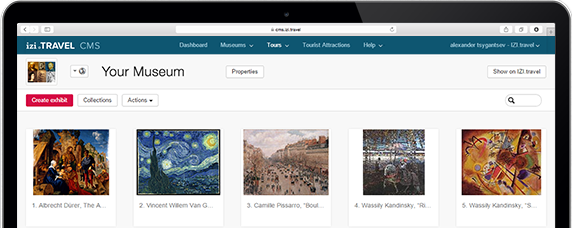Введение
Введение Van Houten chocolate
- Скачайте приложение
- iOS
- Android
- Windows Phone
In the 16th century the cocoa bean was transmitted from America to Europe by the Spanish conquistador Fernando Cortez to Europe. The Aztecs already prepared a drink form the cocoa bean. Because of the high fat content, the beverage proved difficult to digest. Yet the cocoa became popular, because healing powers were attributed to it. In the 18th century chocolate throughout Western Europe became more and more popular. In those days a lot of chocolate businesses were set up in the Netherlands. One of those was the establishment of Johannes Caspar van Houten in the coach house of the property Prinsengracht (now number 22) in Amsterdam. He had a coffee and tea shop and in 1815 was licensed to produce cocoa.
In 1828, the son of Johannes Caspar van Houten, Coenraad Johannes, invented the soluble cocoa powder. This powder replaced the greasy, difficult to digest chocolate cookies, which in order to create a chocolate drink, first had to be cooked in milk.
After a few years the company moved from Amsterdam to Leiden into the corn mill 'De Eendracht'. From then on, the cocoa mill could use wind power instead of manpower to keep the cocoa mill running.
In 1850 the firm bought a commercial building with a steam engine at the Oudegracht in Weesp and thus developed into a modern factory. In 1887 its own gasfactory was put into use. The arrival of Van Houten in Weesp proves to be extremely important for Weesp. After a cautious start, the factory began to grow explosively, particularly after 1865, when the son of Coenraad, Casparus, became part of the management.
Royal Van Houten and advertising
Casparus van Houten and William Scheffer were the ones who mostly understood what global scale advertising campaigns could mean for the branding of a company. From 1873 the factory exhibited at world expos. A lot of energy was put into advertising. Color posters were introduced and (horses) trams with Van Houtencommercials drove throughout Europe. Scheffer organized this from Weesp. In the meantime Casparus spent years in England to interest the English market for Van Houten and also for gaining ideas.
During the years 1880 and 1890 Van Houten became a known firm in the Netherlands as well as abroad. Sales increased dramatically and as a result of that also the number of employees. Agencies came to Düsseldorff (later in Krefeld), Paris, New York and Chicago. Cocoa had become a very common drink.
From 1882 the factory on both sides of the Oudegracht had expanded considerably. Sales increased dramatically, especially abroad, where chocolate, rather than in the Netherlands, became a popular beverage. The population of Weesp, which had about 3,000 inhabitants since 1700, grew between 1850 and 1890 to 6,000. Approximately 1,000 of them worked at Van Houten. Moreover daily large groups of working men and women arrived from out of town to work at Van Houten. In 1889 the factory got the predicate “Royal”.
In 1899 the first Dutch commercial film was recorded by Van Houten. The commercial film was called "Van Houten's chocolate stimulus." It shows a sick municipal official getting better after consuming chocolate.
From 1903 to 1908, more than eight million guilders were spent on advertising. The company was leading using new advertising techniques.
Anywhere in the world you could come across the name "Van Houten ', on the rocks of Gibraltar, in the Rocky Mountains and in the Suez Canal. "East is East, West is West, Van Houten's Cocoa is the best", was their slogan.
In 1928, when the 100th anniversary of the company was celebrated, Van Houten was the largest producer of cocoa powder and cocoa butter in the world. Weesp wás Van Houten.
Many fruitful and successful years followed until after the 2nd World War the board decided the family business was in need of modernizing the company to keep up with the market. Between 1950 and 1963 a number of changes were made. However, the lack of confidence of the management to pass on the company to the next generation marked the end of Van Houten in Weesp.
The shares were sold in 1962 to the US group Grace & Co, which eventually managed to acquire 92% of the shares. Grace & Co. was a firm that dealt in businesses. They acquired firms, dismantled them and sold profitable units. In this case Van Houten lost their cocoa production and all was left was a arduously running chocolate factory.
The "choice" for Grace & Co appeared to be unfavorable for Van Houten. During the sixties units were outsourced and economized until finally the factory was closed in 1971. As a result 600 employees in Weesp lost their jobs. Since then, the brand was sold many times, and Van Houten itself no longer exists. Currently, the brand "Van Houten" in possession of Callebaut chocolate in Belgium.
In 1828, the son of Johannes Caspar van Houten, Coenraad Johannes, invented the soluble cocoa powder. This powder replaced the greasy, difficult to digest chocolate cookies, which in order to create a chocolate drink, first had to be cooked in milk.
After a few years the company moved from Amsterdam to Leiden into the corn mill 'De Eendracht'. From then on, the cocoa mill could use wind power instead of manpower to keep the cocoa mill running.
In 1850 the firm bought a commercial building with a steam engine at the Oudegracht in Weesp and thus developed into a modern factory. In 1887 its own gasfactory was put into use. The arrival of Van Houten in Weesp proves to be extremely important for Weesp. After a cautious start, the factory began to grow explosively, particularly after 1865, when the son of Coenraad, Casparus, became part of the management.
Royal Van Houten and advertising
Casparus van Houten and William Scheffer were the ones who mostly understood what global scale advertising campaigns could mean for the branding of a company. From 1873 the factory exhibited at world expos. A lot of energy was put into advertising. Color posters were introduced and (horses) trams with Van Houtencommercials drove throughout Europe. Scheffer organized this from Weesp. In the meantime Casparus spent years in England to interest the English market for Van Houten and also for gaining ideas.
During the years 1880 and 1890 Van Houten became a known firm in the Netherlands as well as abroad. Sales increased dramatically and as a result of that also the number of employees. Agencies came to Düsseldorff (later in Krefeld), Paris, New York and Chicago. Cocoa had become a very common drink.
From 1882 the factory on both sides of the Oudegracht had expanded considerably. Sales increased dramatically, especially abroad, where chocolate, rather than in the Netherlands, became a popular beverage. The population of Weesp, which had about 3,000 inhabitants since 1700, grew between 1850 and 1890 to 6,000. Approximately 1,000 of them worked at Van Houten. Moreover daily large groups of working men and women arrived from out of town to work at Van Houten. In 1889 the factory got the predicate “Royal”.
In 1899 the first Dutch commercial film was recorded by Van Houten. The commercial film was called "Van Houten's chocolate stimulus." It shows a sick municipal official getting better after consuming chocolate.
From 1903 to 1908, more than eight million guilders were spent on advertising. The company was leading using new advertising techniques.
Anywhere in the world you could come across the name "Van Houten ', on the rocks of Gibraltar, in the Rocky Mountains and in the Suez Canal. "East is East, West is West, Van Houten's Cocoa is the best", was their slogan.
In 1928, when the 100th anniversary of the company was celebrated, Van Houten was the largest producer of cocoa powder and cocoa butter in the world. Weesp wás Van Houten.
Many fruitful and successful years followed until after the 2nd World War the board decided the family business was in need of modernizing the company to keep up with the market. Between 1950 and 1963 a number of changes were made. However, the lack of confidence of the management to pass on the company to the next generation marked the end of Van Houten in Weesp.
The shares were sold in 1962 to the US group Grace & Co, which eventually managed to acquire 92% of the shares. Grace & Co. was a firm that dealt in businesses. They acquired firms, dismantled them and sold profitable units. In this case Van Houten lost their cocoa production and all was left was a arduously running chocolate factory.
The "choice" for Grace & Co appeared to be unfavorable for Van Houten. During the sixties units were outsourced and economized until finally the factory was closed in 1971. As a result 600 employees in Weesp lost their jobs. Since then, the brand was sold many times, and Van Houten itself no longer exists. Currently, the brand "Van Houten" in possession of Callebaut chocolate in Belgium.
Tour stops
Отзывы
Все аудиогиды в вашем смартфоне
Опубликуйте собственный аудиотур!
Используйте систему и мобильное приложение абсолютно бесплатно

